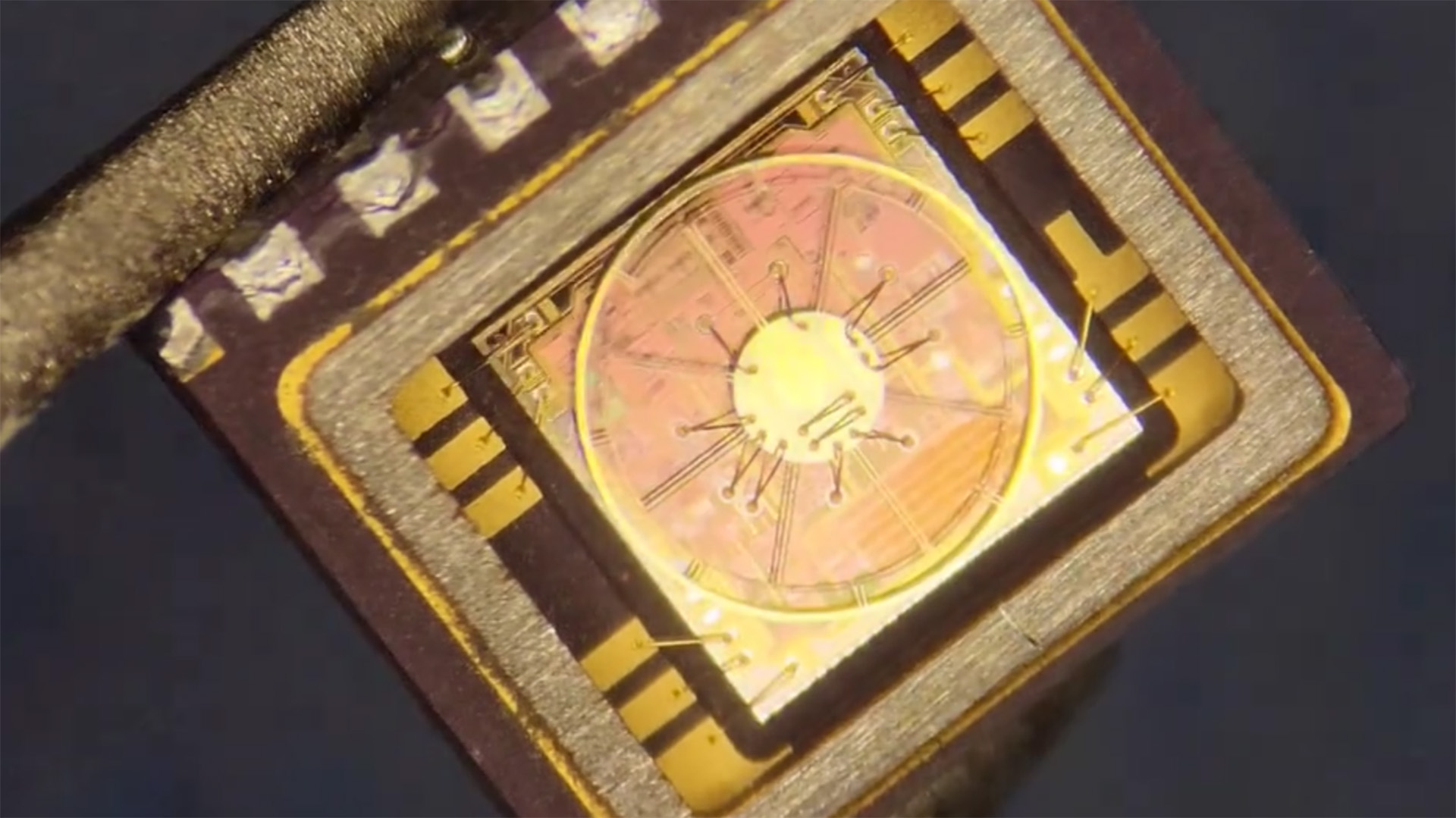My top TikTok account of the minute: this 'guy with two microscopes' that peeps inside computer chips
Ready for your close-up?

It's all clock speed, cache size and core counts—but what's really going on under the hood of your latest computer processor? That's a good question, and one that a fair few university degrees hope to help you understand. If you don't have the time for a cheeky bachelor's degree, how about scrolling through a couple of short, informative TikTok videos instead? I've just the channel…
Evilmonkeyzdesignz is where you want to head to. Their whole schtick is ripping open computer chips and systems and peering inside with a couple of microscopes. Viewers get to join along for the whole process. They're mostly concerned with tearing open older chips, presumably to reduce incurring hefty costs with a couple of massive modern chips, but there's also a degree of older chips having more plainly visible components within them, as you'll see when you watch the videos.
One of their more recent videos is a look at the Intel 4004, the progenitor to all modern microprocessors. They go into some detail about each block within the chip, zooming close to give a better view of what each bit actually looks like. That's not easily done with a modern processor—for comparison, the 4004 uses a 10 micron (micrometre) lithographic process while a modern Intel Core i9 14900K uses a 10 nanometre process node, confusingly known as Intel 7. Though the name of a modern process node doesn't exactly correlate to its exact transistor size, the newer chip features transistors 10,000 times smaller.
Another video delves inside a memory chip; another an entire wafer made up of teeny tiny chips. Some of the more popular videos take a look at the secret doodles located on many computer chips, such as a dinosaur with VR glasses or Sonic the Hedgehog. Or a crude drawing of speedy blue guy, anyways. Compared to some components on a silicon chip, these doodles are actually rather huge, but good luck seeing any detail without a microscope.
A video on a 'Digital Receiver' from Graychip shows just how immensely detailed one of many chips could be within a single device. And that chip was designed back in 1990. Nowadays, we're stacking more and more onto a single system-on-chip, but there's a massive market in smaller controllers, memory, ASICs and FPGAs, with a wide range of uses and complexity.
Admittedly some of the best clips over on the channel aren't even what many would consider a computer processor at all, they're sensors. Such as the CRM200 MEMs vibrating structure gyroscope.
That's why I love these sorts of channels—not only Evilmonkeyz but also chip photographer Fritzchens Fritz springs to mind—you get to see the individual bits of a processor that make for meaner, bigger, more performant processors once they're loaded into a system. Getting up close and personal with even the first ever microprocessors is pretty bewildering, let alone the billion-transistor chips more common today.
Keep up to date with the most important stories and the best deals, as picked by the PC Gamer team.
Best CPU for gaming: Top chips from Intel and AMD.
Best gaming motherboard: The right boards.
Best graphics card: Your perfect pixel-pusher awaits.
Best SSD for gaming: Get into the game first.

Jacob earned his first byline writing for his own tech blog. From there, he graduated to professionally breaking things as hardware writer at PCGamesN, and would go on to run the team as hardware editor. He joined PC Gamer's top staff as senior hardware editor before becoming managing editor of the hardware team, and you'll now find him reporting on the latest developments in the technology and gaming industries and testing the newest PC components.


